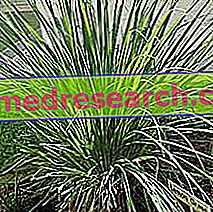What's this
What is the alkekengi?
Alkekengi - alchechengi or alchechengio - is the name of an oriental plant and of the fruit it produces, the latter normally used for food and above all decorative purposes.

The alkekengi berry is a food that belongs to the VI or VII fundamental group of foods - sweet fruits and vegetables sources of provitamin A (RAE - retinol equivalents) and vitamin C (ascorbic acid); these foods are also rich in water, fiber, soluble sugars (fructose) and some specific minerals. It is not easily framed in one or the other together because, in the chemical analysis, it does not bring significant quantities of either retinol equivalent or ascorbic acid. Note : proportionally, the percentage of vitamin C seems to be greater.
deepening
In English, alkekengi is also known as: bladder cherry, Chinese lantern, Japanese-lantern, strawberry groundcherry or winter cherry. P. peruviana, on the other hand, is also known as "Golden berries" or "Cape gooseberry".
In the kitchen, the alkekengi has a different role depending on the culture and gastronomic tradition. In Italy it is particularly used as a decoration in desserts. Abroad, however, especially in Asia, it also has a real food function.
Of the genus Physalis and alkekengi species, this shrub vegetable is closely related to the Peruvian alchechengio ( P. peruviana ); the similarity is such that, in Italy for example, the name of alkekengi is commonly used to indicate both shrubs and their fruits.
Curiosity
The fossils of the seeds of Physalis alkekengi found in Siberia date back to the Miocene, in Europe to the Pliocene and in Germany to the Pleistocene. The alkekengi pollen was found in the early Pleistocene sediments at Ludham, east of Wroxham, in East Anglia.
The fruit of alkekengi is easily recognizable due to the bright red color of the outer covering, typically consisting of leaves similar to paper, which therefore resembles the famous oriental paper lanterns.
Did you know that ...
In Japan, alkekengi seeds are used in the Bon Festival - a Buddhist ceremony to honor spirits - as an offering to guide the souls of the dead.
The annual market of Asakusa, in the district of Sensō-ji, is dedicated to the alkekengi flower, called hōzuki-ichi, on 9 and 10 July.
The alkekengi plant grows naturally in the regions of southern Europe, southern Asia and north-eastern Asia. It is a perennial herbaceous-shrub plant that reaches a height of 40-60 cm, with spirally arranged leaves 6-12 cm long and 4-9 cm broad. The flowers are white, with a corolla with five lobes 10-15 mm in diameter and a basal calyx that ripens on the fruit cover, 4-5 cm long and wide.
Sape gives you that ...
The leaves and rhizome of the alkekengi contain solanine, a toxic glycosidic alkaloid which, taken in poisonous amounts, causes headaches, vomiting, nausea and diarrhea.
Nutritional Properties
Nutritional properties of alkekengi
As mentioned above, the alkekengi is not precisely framed in the VI or in the VII fundamental group of foods. This is because it contains both provitamin A (RAE - retinol equivalents), and vitamin C (ascorbic acid), but neither of them in very high quantities; in percentage terms on the RDA (Recommended Daily Allowance) vitamin C is however clearly prevalent over the other, but it could be said that it has the characteristics to fit into both or none of the two groups.
The alkekengi has an average caloric intake. Energy is supplied mainly by carbohydrates, followed by low amounts of proteins and irrelevant lipids. Carbohydrates consist entirely of fructose - simple, soluble, monounsaturated sugar. Peptides have a low biological value, ie they do not contain - in the right quantities and proportions - the essential amino acids of the human protein model. Fatty acids are, in theory, predominantly unsaturated.
Alkekengi also contains dietary fiber, a part of which is certainly soluble; however, the amount of the soluble / insoluble distribution is not known.
Free of cholesterol, it does not even contain the molecules mainly responsible for scientifically diagnosable food intolerances, such as gluten, lactose and histamine. Alkekengi is poor in phenylalanine and purines, but remember that excess fructose in the diet promotes the retention of uric acid.
As far as vitamins are concerned, alkekengi has discrete concentrations of retinol equivalent (RAE - provitamin A) and ascorbic acid (vitamin C). With regard to mineral salts, on the other hand, potassium and magnesium levels should be appreciable.
There is a fair concentration of phytotherapeutic molecules of non- vitaminic origin, such as polyphenols - antioxidants - and sterols called "physalin" - from the name of the botanical genus Physalis, with antibacterial and leishmanicidal activity. It also contains ethyl ester of caffeic acid, 25, 27-dehydro-fisalina L, physalin D and cuneataside E.

| Alkekengi | |
| Nutritious | Quantity' |
| water | 85.40 g |
| Protein | 1.90 g |
| Lipids | 0, 70 g |
| Saturated fatty acids | - g |
| Monounsaturated Fatty Acids | - g |
| Polyunsaturated Fatty Acids | - g |
| Cholesterol | 0.0 mg |
| TOT Carbohydrates | 11.20 g |
| Starch / Glycogen | - g |
| Soluble Sugar | - g |
| Food fiber | - g |
| Soluble | - g |
| Insoluble | - g |
| Power | 55.0 kcal |
| Sodium | - mg |
| Potassium | - mg |
| Iron | 1.0 mg |
| Football | 9.0 mg |
| Phosphorus | 40.0 mg |
| Magnesium | - mg |
| Zinc | - mg |
| Copper | - mg |
| Selenium | - mcg |
| Thiamine or vitamin B1 | 0.11 mg |
| Riboflavin or vitamin B2 | 0.04 mg |
| Niacin or vitamin PP | 2.80 mg |
| Vitamin B6 | - mg |
| folate | - mcg |
| Vitamin B12 | - mcg |
| Vitamin C or Ascorbic Acid | 11.00 mg |
| Vitamin A or RAE | 36.0 RAE |
| Vitamin D | 0.0 mcg |
| Vitamin K | - mcg |
| Vitamin E or Alpha Tocopherol | - mg |
Diet
Alkekengi in the diet
The fruits of alkekengi, like most foods belonging to the category, lends itself to almost all diets. Being moderately sugary and energetic, they have few contraindications even in the case of overweight, type 2 diabetes mellitus and hypertriglyceridemia. Obviously, in these cases - especially the more serious ones - it is advisable to reduce the average portion as much as the frequency of consumption.
Dietary fibers, of which we do not know the details - composition and distribution - perform numerous functions. First and foremost, properly associated with water - of which alkekengi are rich - fibers can:
- increase the mechanical stimulus of satiety - even if fructose is a carbohydrate that weakly triggers the hormonal feedback of satiety
- modulate nutritional absorption - reducing the insulin glycemic surge and hindering the absorption and reabsorption of cholesterol and bile salts
- prevent or treat constipation / constipation.
This latter aspect contributes to decreasing the chances of carcinogenesis of the large intestine and of many other discomforts such as hemorrhoids, anal fissures and anal prolapse, diverticulosis and diverticulitis, etc. It should also be remembered that soluble fibers constitute a nutritional substrate for intestinal bacterial flora; maintaining the trophism of the microbiota, whose metabolism releases important nutritional factors for the mucosa, further promotes the health of the colon.
Provitamins A, vitamin C, polyphenols and other phytoelements have an important antioxidant role. In addition to counteracting the action of free radicals responsible for cellular aging, these nutritional elements are considered useful for treating various metabolic pathologies.
The richness of water and, potentially, of potassium and magnesium, contributes to improving the hydro-saline balance - which becomes precarious especially with increasing sweating - and supports the pharmacological treatment of primary arterial hypertension. Water and minerals are two nutritional factors often lacking even in the elderly.
The alkekengi is to be avoided, logically, in case of food allergy.
There are no contraindications for the conditions of: celiac disease, lactose intolerance, histamine intolerance and phenylketonuria; it is instead advised not to overdo it, respecting frequency of consumption and normal portions, in case of hyperuricemia or gout - as we have already said, it is known that too much fructose in the diet can aggravate the retention of uric acid.
The alkekengi has no limitation in the vegetarian, vegan and raw food diet; the same applies to philosophies and / or religions of all kinds.
The average portion of alkekengi is 100-200 g (about 55-110 kcal).
Kitchen
Alkekengi in the kitchen
The alkekengi is a fruit widely used as such especially in the areas of cultivation and production - especially in the Asian continent. In Italy, however, due to its characteristic appearance, like that of P. peruviana, it is often used as a decoration in desserts.
Other uses of the alkekengi
The dried fruit, called "golden flower" in the medicine Yunani - or Unani, an alternative discipline of Perso-Arabica origin - is used as a diuretic, antiseptic, corrective of the liver and sedative.
Description
Description of the alkekengi
The alkekengi herbaceous shrub plant produces rhizomatous roots that quickly sprout in the spring period, immediately after the stagnation of the cold season. The stem easily reaches one meter in height and appears erect, branched, tendentially hairless and angular. From it start the secondary branches and the leaves, green and oval in shape, 5-8 cm long. The flowers are white, axillary, bell-shaped; the reddish-orange calyces, of paper consistency, which contain the berries are characteristic. These, real fruits, are spherical and also reddish orange in color; contain small seeds.
Cultivation
Elements of alkekengi cultivation
Alkekengi is a very popular ornamental plant, widely cultivated in temperate regions around the world and resistant even to temperatures below -20 ° C. It grows in arid soils but prefers the undergrowth, forming luxuriant hedges up to 1000 m of altitude . It requires a medium level of solar radiation, better indirect or partially shaded.
The alkekengi herbaceous shrub can be a pest, due to its very invasive rhizomatous root system that releases new shoots at a distance from the point of birth. In various places around the world, it has escaped cultivation and has invaded its surroundings.



